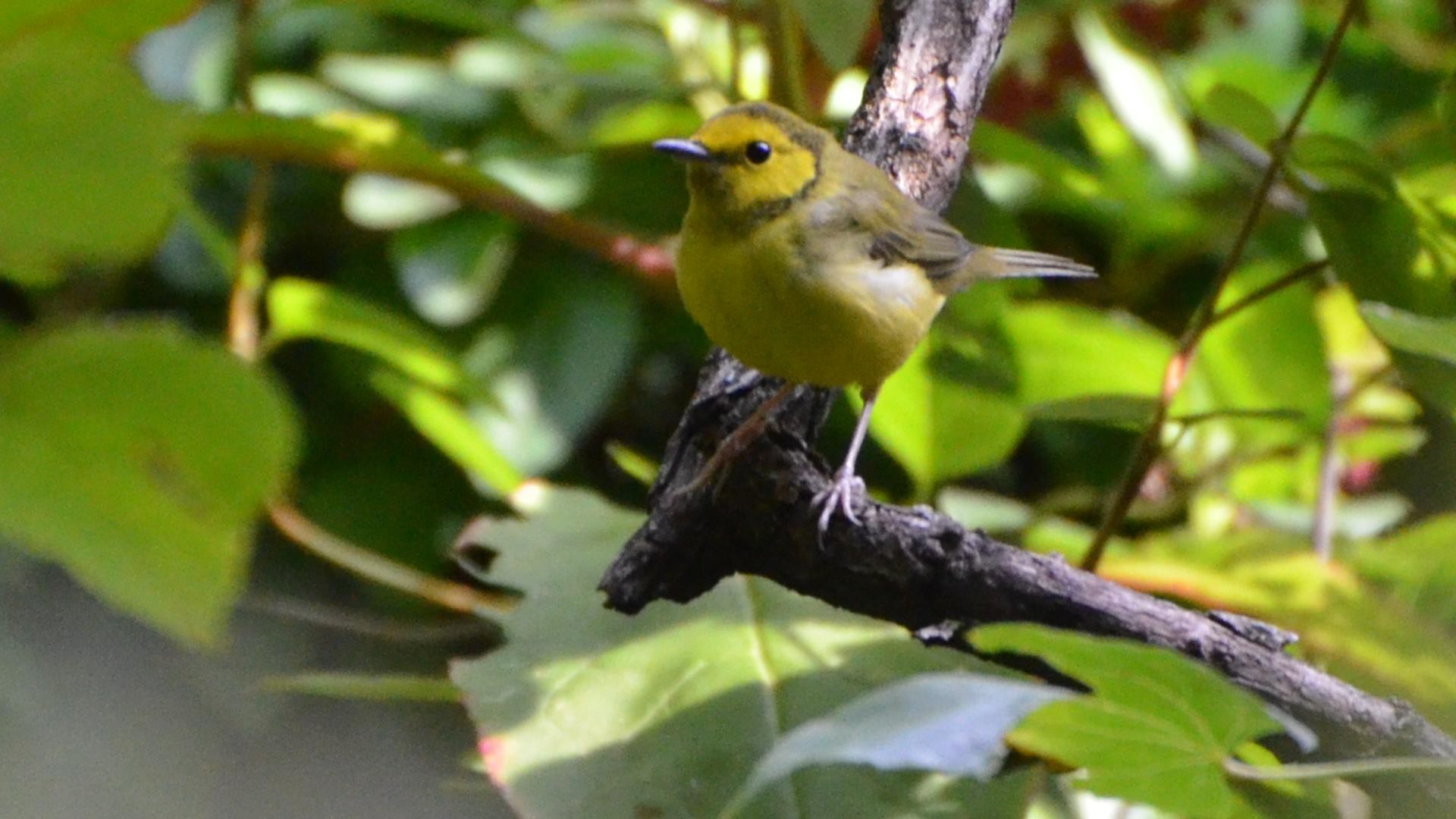Hooded Warbler
A species of Setophaga Warblers Scientific name : Setophaga citrina Genus : Setophaga Warblers
Hooded Warbler, A species of Setophaga Warblers
Botanical name: Setophaga citrina
Genus: Setophaga Warblers
Content
Description People often ask General Info
 Photo By Andy Reago & Chrissy McClarren , used under CC-BY-2.0 /Cropped and compressed from original
Photo By Andy Reago & Chrissy McClarren , used under CC-BY-2.0 /Cropped and compressed from original Description
The hooded warbler is a small bird and mid-sized warbler, measuring 13 cm (5.1 in) in length and weighing 9–12 g (0.32–0.42 oz). The hooded warbler has a wingspan of 6.9 in (17.5 cm). It has a plain olive/green-brown back, and yellow underparts. Their outer rectrices have whitish vanes. Males have distinctive black hoods which surround their yellow faces; the female has an olive-green cap which does not extend to the forehead, ears and throat instead. Males attain their hood at about 9–12 months of age; younger birds are essentially identical to (and easily confused with) females. The song is a series of musical notes which sound like: wheeta wheeta whee-tee-oh, for which a common mnemonic is "The red, the red T-shirt" or "Come to the woods or you won't see me". The call of these birds is a loud chip. 
Size
13 cm (5.25 in)
Colors
Black
Green
Yellow
Gray
Life Expectancy
8 years
Nest Placement
Shrub
Clutch Size
2 - 5 eggs
Incubation Period
1 brood
Number of Broods
12 days
Nestling Period
8 - 9 days
Feeding Habits
Hooded Warbler's diet consists mainly of insects and arthropods. They exhibit foraging behaviors that include hawking where they actively fly to catch prey mid-air as well as picking off prey from foliage or the ground.
Habitat
Hooded Warbler favor mature deciduous forests with dense understories of shrubs such as mountain laurel, rhododendron, viburnum, and spicebush. They are typically found at elevations up to 3,600 feet. Preferring a humid climate, these birds thrive in environments that offer ample cover and rich insect populations for foraging. During winter, hooded Warbler migrate to lowland tropical forests, scrubs, and brushy fields, which provide similar dense vegetation for shelter and feeding.
Nest Behavior
Females build hooded Warbler's nest within 2-6 days during breeding season, lay eggs in it, and along with males, provide parental care to the eggs and young.
Nest Characteristics
Hooded Warbler's nest is typically placed in shrubs 1–4.5 feet high, using bark, fine grasses, and plant down to form a cup shape. It resembles a clump of dead leaves due to the wrapping of dead leaves around the bottom.
Dite type
Insectivorous
People often ask
General Info
Feeding Habits
Bird food type
Bird Feeder Type

Platform
Sounds
Song
Recording location: United States
Song
Recording location: United States
Behavior
Hooded Warbler typically forages in the understory of forests, utilizing a behavior where they hop across the ground and between branches, frequently displaying their distinctive white tail feathers. They tend to be solitary, though males maintain territories and engage in both monogamy and seeking additional matings. Notably, they often fall victim to nest parasitism by Brown-headed Cowbirds, resulting in the potential loss of their own offspring. Territorial defense is notable in hooded Warbler, with males exhibiting hunched posture and lateral head movements as intimidation tactics, escalating to chases or attacks if necessary. On wintering grounds, hooded Warbler continue to display territorial behavior, with habitat segregation based on gender and occasional participation in mixed-species flocks.
Species Status
Not globally threatened.

 Photo By Andy Reago & Chrissy McClarren , used under CC-BY-2.0 /Cropped and compressed from original
Photo By Andy Reago & Chrissy McClarren , used under CC-BY-2.0 /Cropped and compressed from original Scientific Classification
Phylum
Chordates Class
Birds Order
Perching birds Family
New world warblers Genus
Setophaga Warblers Species
Hooded Warbler